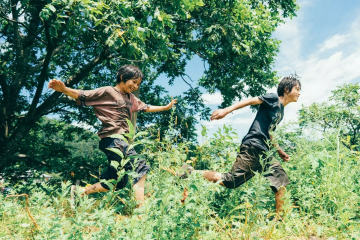José Miguel Ribeiro
Watched at the Festival Cinémas d’Afrique de Lausanne 2023
Far too often animation is snubbed, as a second-rate art form, dedicated only to children’s cartoons and movies, and even when these films have a deeper meaning, as with some of the products of the Pixar or Studio Ghibli universe, they remain dedicated to young people. Recently Sony has twisted the way animated films are viewed with its Spider-Man, yet still remaining in the world of animated films for the sake of entertainment. Increasingly, however, animated films are being used to tell raw and harsh stories, otherwise challenging to get across to a wide audience. Films such as Waltz with Bashir, Persepolis and FLEE, to name a few, lead us into beautiful and touching stories that are visually light but tough to swallow.
And it is precisely on this very style that Nayola, directorial debut of José Miguel Ribeiro, takes us to post-colonial Angola through the histories of three women, three different generations pre- during- and post-civil war. In a country divided and destroyed during the war and silenced after the war by the military. A country still poor where these strong women, however, seek the truth about what happened during the war. Nayola’s daughter, Yara, wants to convey the truth through her rap as a form of rebellion, and liberation, and for this persecuted by the police. On the other end, we follow the story of Nayola who lives during the war period in search of her husband, discovering the different realities of this cruel human activity.
In Nayola, the animation, between realism and mysticism, helps in truly telling the cruelty of war. Animated films about war are the only ones that really succeed in conveying the idea of inhumanity and alienation of violence. I think it is impossible to depict and represent a so harsh violence, that traumatizes men, using the very mediums of men. Instead, one must be able to use creativity, and here animation succeeds at its best. Nayola reaches her finest in the fantastic scenes in which reality gives way to the subconscious. But these moments soon end up being interspersed with episodes of Yara’s struggle for free speech, far flatter and less profound. Instead, I would have really liked to be able to immerse myself in the mystical world of the war-torn subconscious, perhaps solely following Nayola, to further empathize with her journey, her sorrow and her pain.
- Mario Di Luca


